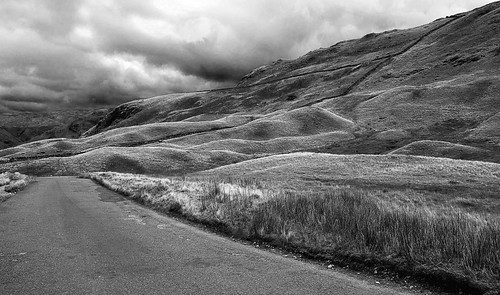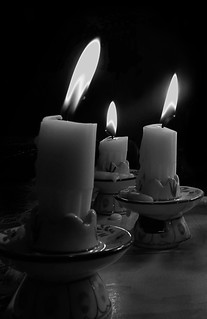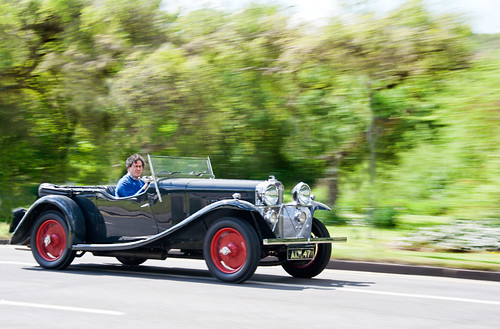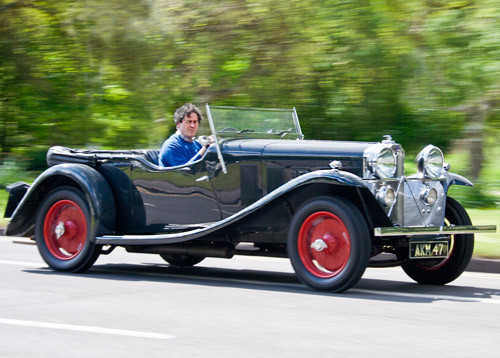
Honiston Tops – The English Lake District. Mono shots are so open to moody interpretation. Click the picture to view large
By Netkonnexion on Flickr ![]()
The contrasts in monochrome make it suited to moody scenes.
Yes, we see so much in the gloom! Mono is a great way to express the deep, dark and threatening. It is also uplifting in many ways. Look at how we can enhance our shots…
Landscapes
The beauty of a landscape is not about the weather. It is in the character of what we see in the country and the shapes and forms. However, the weather can complete it. A beautiful day in the scene above can equally light up the sky and uplift the sole, even in this desolate place. Surely colour is more suited to that uplift? Probably. Weather is the icing on the cake. If you can capture it with the contrasts fully expressed you have a winner. The depth of the cloud darkness has expressed the awesomeness of those wonderful clouds. What is great about this type of shot is the depth of the greys and blacks, as well as the highlights of the whites and bright spots. In a landscape the moodiness lies in the contrast through that spectrum. Try to express the full range of blacks right through to whites to bring out the mood.
Subjects
The use of a great subject is really the key to a moody monochrome. Some subjects really lead us to the moody feeling. Candles are a great example. If we are to express a deep gloom the candle is perfect. Candles express our fears of shadowy corners and the lurking danger just out of our sight. They seem to sum up a real essence of the past and the primeval fear that they were meant to chase away.

The moodiness of candles is often created by your exposure.
Click image to view large.
Moody Candles
By Netkonnexion on Flickr ![]()
Faces
It is great to find deep expression in faces too. It’s often contrastiness of the lighting in a portrait that brings out moodiness in the shot. The archetypal villain in the wide brimmed hat, hiding in the darkness underneath it, or on the dimly lit corner, is a great example. Think of the dark and uninviting holes where you see villains portrayed in stories and films. You too can express these things in your photography. It is about the contrasty blacks through to whites again. More black – moody. More white – uplifting! The timeless battle between good and evil.
The moody face, of course, can be more than just deeply-dark to brightly-bright lighting. Often moodiness in the face can be highlighted through sheer expression. It is important to make sure that if you are going for moody that the expression supports the scene. Remember nothing will work if you break the mood. Dark, dim and dank, is trumped by jumping for joy!
Composition – Resource pages on Photokonnexion
Light and Lighting – Resource pages on Photokonnexion
Black and white is fun – try monochrome
Five tips to create a winning image with ‘mystery’



